

Introduction to the SAMR Model Video. Bloom's Digital Taxonomy Video. Tap here for our Free App!
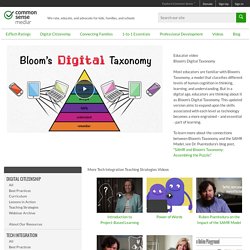
Get all our media picks, personalized for your kids. No thanks Jump to navigation Discover the best apps, games, and websites and learn best practices forteaching with technology. Mute Current Time 0:00 Duration Time 4:50 Loaded: 0% Progress: 0% Stream TypeLIVE Remaining Time -0:00 Playback Rate Chapters Chapters descriptions off, selected Descriptions subtitles off, selected Subtitles captions settings, opens captions settings dialogcaptions off, selected Captions This is a modal window. Educator video Bloom's Digital Taxonomy Most educators are familiar with Bloom’s Taxonomy, a model that classifies different levels of human cognition in thinking, learning, and understanding. To learn more about the connections between Bloom's Taxonomy and the SAMR Model, see Dr.
Find Videos Digital Citizenship All Best Practices. Google Forms Can Now Automatically Grade Quizzes Without an Add-on. For a long time Flubaroo has been one of my go-to recommendations for easy scoring of quizzes created in Google Forms.
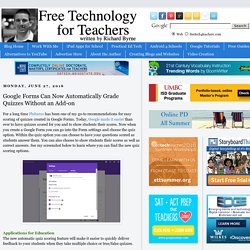
Today, Google made it easier than ever to have quizzes scored for you and to show students their scores. Now when you create a Google Form you can go into the Form settings and choose the quiz option. Within the quiz option you can choose to have your questions scored as students answer them. Digital.Content.Creation.in.Schools A.Common.Core.Approach 2015 265p. Book British Council Innovations in Learning Technologies for ELT. Book The Internet (Resource Books for Teachers) Book The Internet and Young Learners (Resource Books for Teachers) SAS® Curriculum Pathways® Edutopia. Each day, teachers face the task of helping students stay engaged, show growth, and master the curriculum.
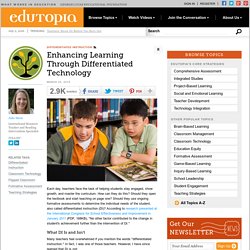
How can they do this? Should they open the textbook and start teaching on page one? Should they use ongoing formative assessments to determine the individual needs of the student, also called differentiated instruction (DI)? According to research presented at the International Congress for School Effectiveness and Improvement in January 2011 (PDF, 168KB), "No other factor contributed to the change in student's achievement further than the intervention of DI. " What DI Is and Isn't Many teachers feel overwhelmed if you mention the words "differentiated instruction. " Creating an individual plan for each of my students Keeping students in stagnant groups based on data from the beginning of the year Teaching only the lower-level students and letting the higher-level students teach themselves.
Instead, as stated in an ASCD infographic, differentiated instruction is when: 1. 2. 3. Home - Cambridge English Digital Framework for Teachers. Book The Internet and Young Learners (Resource Books for Teachers) Article ETp68 MobileLearning. 25 ideas for using WhatsApp with English language students. Philip Haines is the Senior Consultant for Oxford University Press, Mexico.
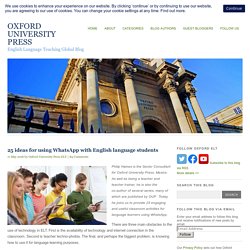
As well as being a teacher and teacher trainer, he is also the co-author of several series, many of which are published by OUP. Today he joins us to provide 25 engaging and useful classroom activities for language learners using WhatsApp. There are three main obstacles to the use of technology in ELT. First is the availability of technology and internet connection in the classroom. Second is teacher techno-phobia. WhatsApp or similar messaging services can help overcome these obstacles. Many self-confessed, techno-phobic teachers that I know use WhatsApp on a regular basis in their private lives, so already feel quite comfortable with it. Here are 25 ideas of how to make good use of WhatsApp for language learning. Like this: Like Loading... Horizon. The NMC Horizon Project is a global ongoing research initiative that explores the trends, challenges, and technology developments likely to have an impact on teaching, learning, and creative inquiry.
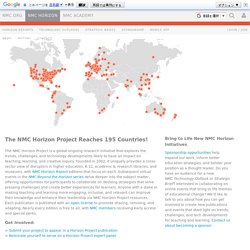
Founded in 2002, it uniquely provides a cross-sector view of disruptors in higher education, K-12, academic & research libraries, and museums, with NMC Horizon Report editions that focus on each. Subsequent virtual events in the NMC Beyond the Horizon series delve deeper into the subject matter, offering opportunities for participants to collaborate on devising strategies that solve pressing challenges and create better experiences for learners. Anyone with a stake in making teaching and learning more engaging, inclusive, and relevant can improve their knowledge and enhance their leadership via NMC Horizon Project resources.
Each publication is published with an open license to promote sharing, remixing, and adapting. Get Involved: